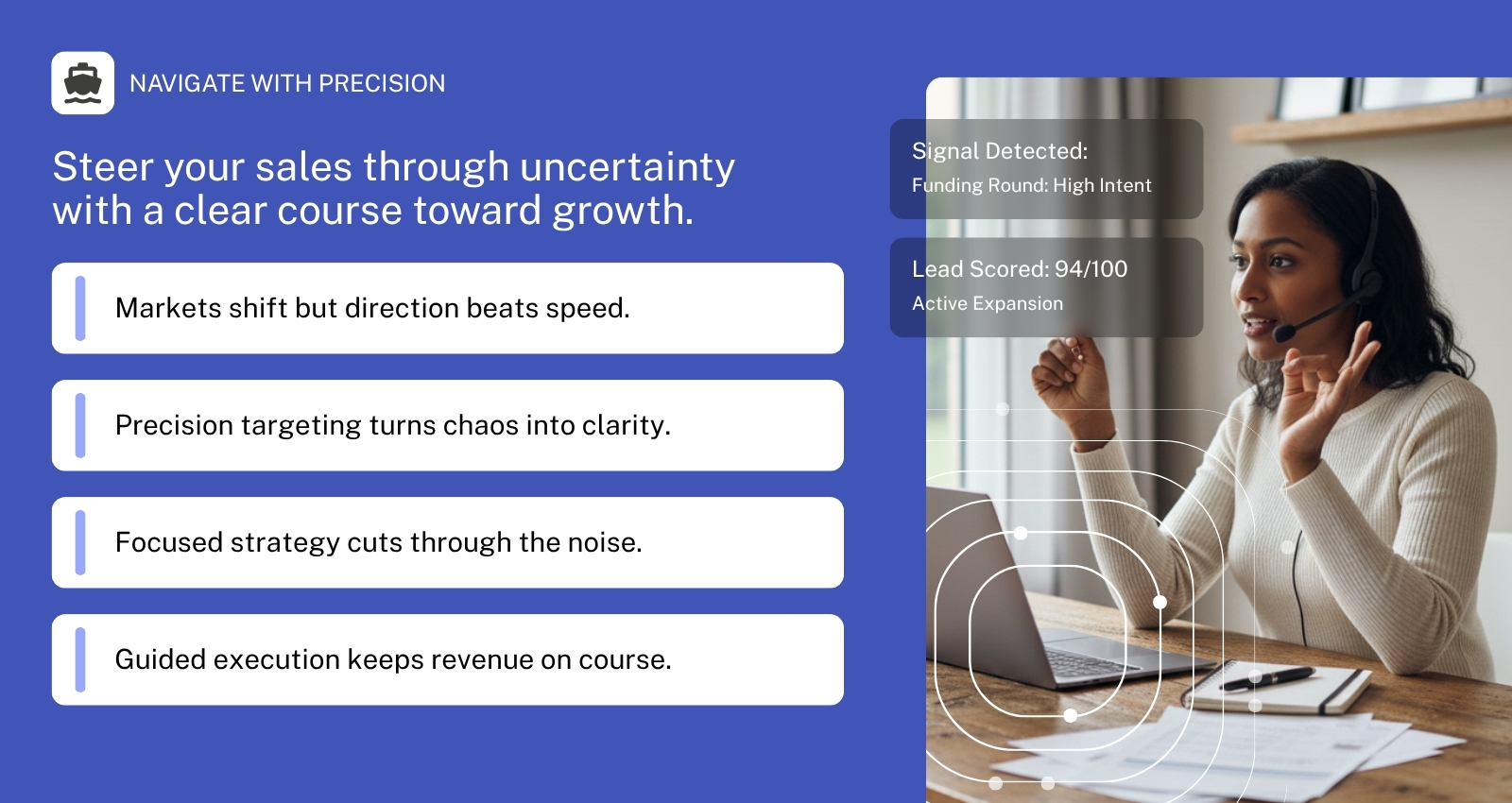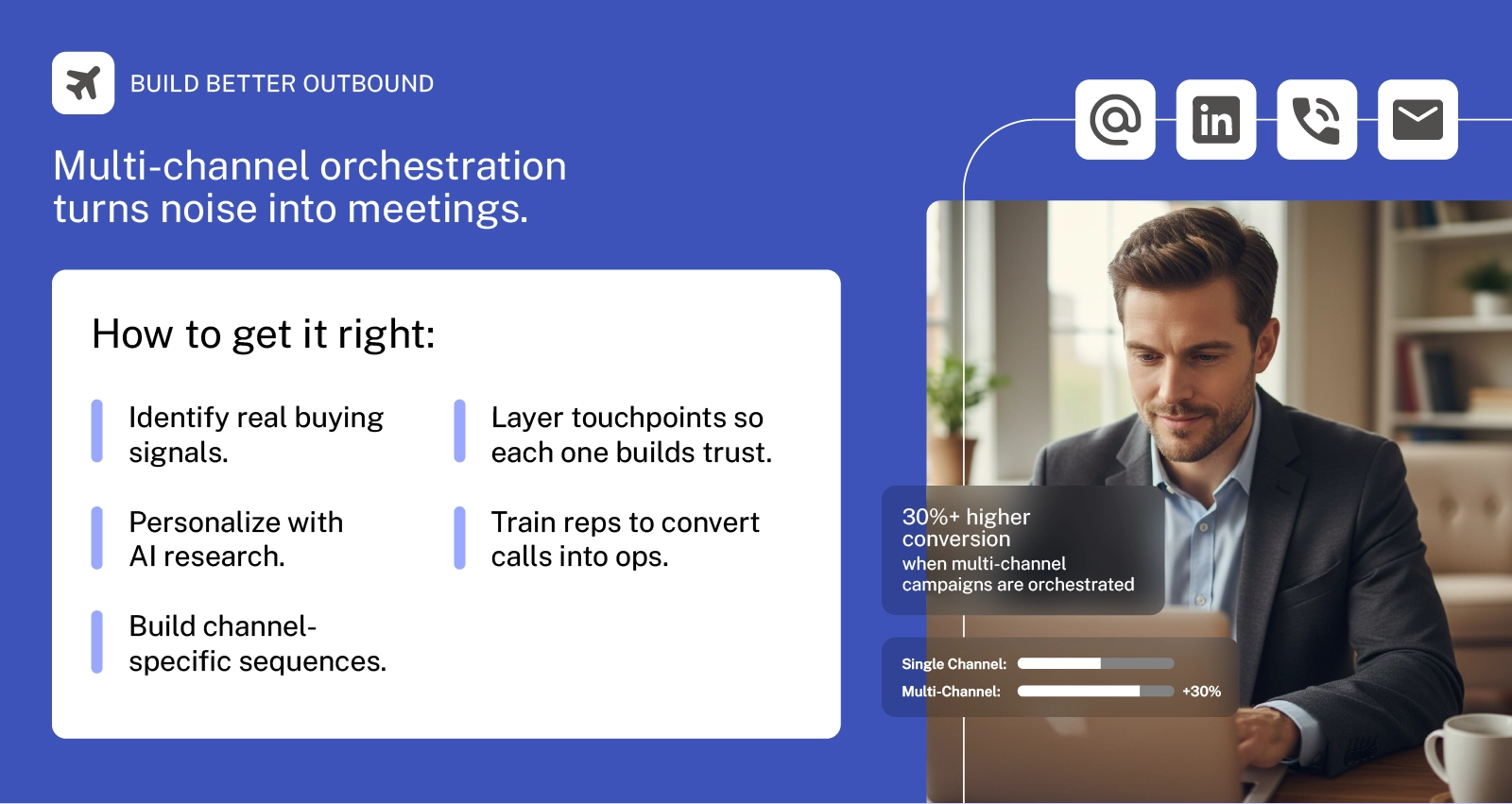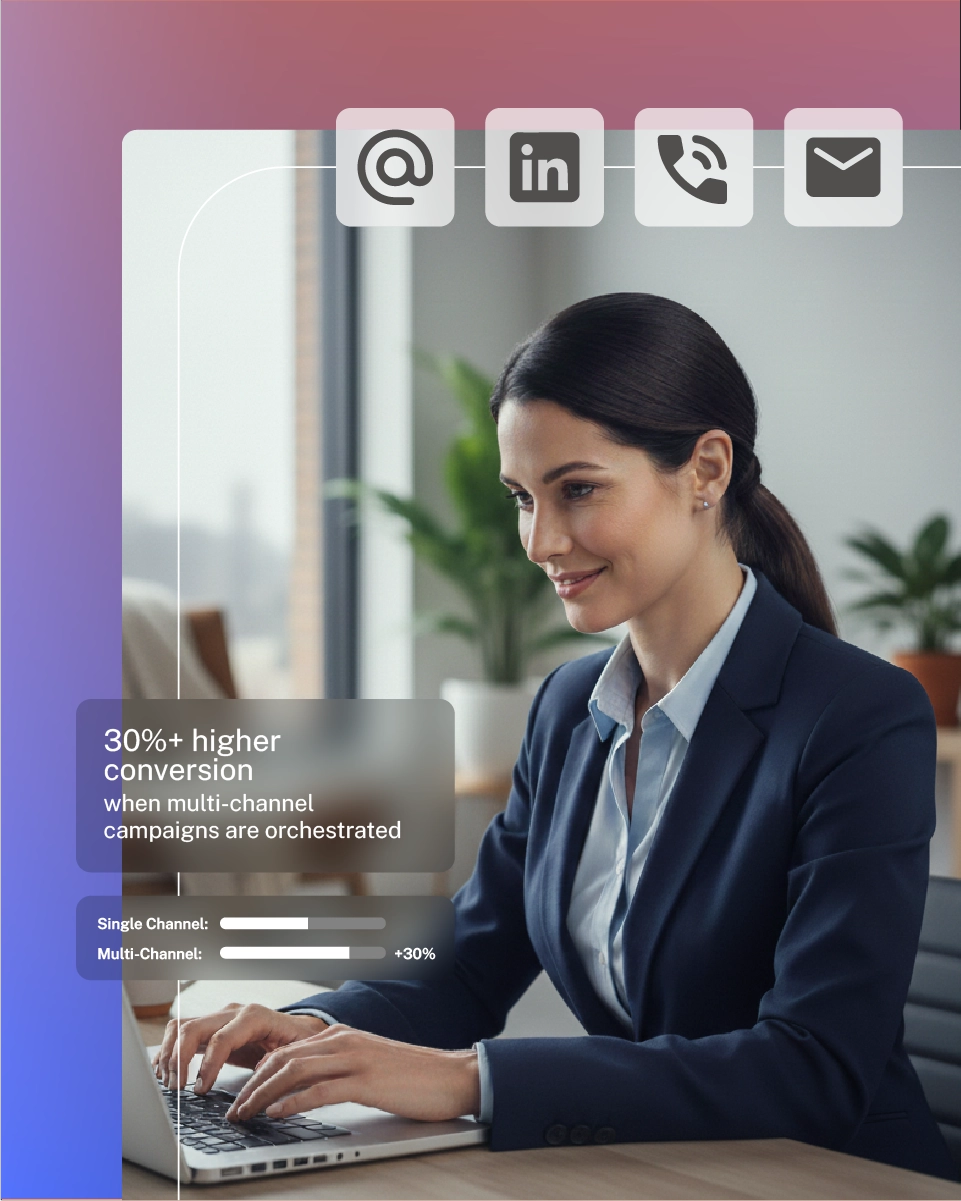

Local vs Global SDR Teams: Which Set Up Works Best?
[blog_at_glance]
In today's remote-first business landscape, the decision between building a local or global team of Sales Development Representatives (SDRs) has taken on new dimensions. With the rise of hybrid and fully remote work environments, geographical boundaries have blurred, opening up fresh opportunities and challenges for sales teams. This shift has reignited the debate on whether to prioritise local expertise or leverage global talent in your SDR strategy.
Let's dive into the nuances of this conundrum and explore some often-overlooked factors.
Table of contents
- Enterprise or SME?
- Market Nuances
- The Remote Work Factor
- Leveraging Global Talent
- Legal and Regulatory Considerations
- Technology and Tools
- The Hybrid Approach
- Testing and Optimisation
- Conclusion
Enterprise or SME?
The size of the company you're targeting plays a significant factor in deciding whether to approach prospects with English speakers or native language speakers. Let's break it down:
When targeting enterprise accounts, particularly in Europe, we've found that using English can be just as effective as employing local language speakers. This might seem counterintuitive, but in many multinational corporations, English serves as the lingua franca of business. However, don't make the mistake of thinking this is a one-size-fits-all solution. Cultural nuances still play a crucial role. As Erin Meyer points out in her book "The Culture Map," understanding the subtle differences in communication styles across cultures can make or break a deal.
For Small and Medium Enterprises (SMEs), the game changes dramatically. Here, a local language speaker can provide that personal touch that often makes the difference between a booked meeting and a missed opportunity. It's not just about language; it's about understanding the local business ecosystem, regulations, and cultural norms. Personalization at scale is key to modern sales success. This becomes exponentially more effective when done with local knowledge and language skills.
Market Nuances
Our experience has shown that market nuances can significantly impact the effectiveness of local versus global teams. In the US and France, for instance, we've seen local SDRs consistently outperform their global counterparts. The reasons range from cultural alignment to understanding of local business practices.
Conversely, in markets like Scandinavia and the UK, global talent in certain english speaking regions can often hold their own against local teams. This could be attributed to the high level of English proficiency and the international outlook of businesses in these regions.
The Remote Work Factor
The rise of remote work has added another layer of complexity to this decision. If you're running a hybrid team with some members in-office and others remote, consider the potential impact on team cohesion and individual motivation.
Research from Gallup shows that remote workers can be 20% more productive than their office counterparts, but only when managed effectively. Ensuring your remote SDRs feel connected and motivated is crucial. Tools like Slack, Zoom, and Allego can help bridge the gap, but nothing beats the energy of a collaborative office environment for many SDRs.
Leveraging Global Talent
For fully remote teams, hiring talent from different regions can be a significant advantage. It allows for 24/7 coverage and brings diverse perspectives to your team. However, this approach comes with its own set of challenges.
One often overlooked factor is the importance of language alignment between SDRs and their managers. If managers can't understand the nuances of their SDRs' conversations, coaching becomes incredibly challenging. While call transcripts and translations can help, they don't capture the full essence of the interaction.
Legal and Regulatory Considerations
The legal landscape adds another layer of complexity to the local vs. global debate. Different regions have varying regulations around sales practices, data protection, and communication.
For instance, Germany's double opt-in legislation for unsolicited email communication necessitates a more telephone-heavy approach. In certain US states, call recording laws require consent from all parties, which can impact your ability to monitor and coach SDRs effectively.
The EU's General Data Protection Regulation (GDPR) also plays a significant role in how you can approach and communicate with prospects in European countries. Ensuring compliance across multiple jurisdictions can be a significant challenge for global teams.
Technology and Tools
Advancements in sales technology have somewhat levelled the playing field between local and global teams. Tools like Gong.io for call analysis, SalesLoft for sales engagement, and ZoomInfo for data enrichment can enhance the capabilities of both local and global SDRs.
However, the effective use of these tools often requires a deep understanding of the local market and cultural context. A global SDR might have access to the same tools as a local one, but the local SDR's ability to interpret and act on the data within the correct cultural framework can make a significant difference.
The Hybrid Approach
Given the complexities involved, many companies are finding success with a hybrid approach. This involves maintaining a core team of local SDRs for key markets while supplementing with a global team for broader coverage and round-the-clock operations.
This approach allows for the cultural sensitivity and local knowledge needed for complex or culturally specific markets, while also providing the scalability and cost-effectiveness of a global team.
Testing and Optimisation
Ultimately, the most effective approach will depend on your specific business needs, target markets, and resources. The key is to continually test and optimise your strategy.
Implement A/B testing in your outreach efforts, comparing the performance of local versus global SDRs. Track key metrics like response rates, meeting booking rates, and ultimately, closed deals. Use tools like Salesforce Einstein Analytics or Tableau to visualise and analyse your data.
Remember, what works today might not work tomorrow. The world is constantly evolving, and your SDR strategy should evolve with it.
Conclusion: Flexibility is the Name of the Game
In the ever-changing world of sales development, flexibility is crucial. Whether you opt for a local, global, or hybrid approach, be prepared to adapt your strategy based on results and changing market conditions.
As Aaron Ross, author of "Predictable Revenue," often says, "The key to scalable growth is creating predictable, repeatable processes." Whether those processes are executed by local or global teams, the focus should always be on what delivers the best results for your unique situation.
In the end, the local vs. global debate isn't about finding a universal answer, but about discovering what works best for your business, your markets, and your customers. Keep testing, keep learning, and most importantly, keep selling!



“I focus on leading the direction of the business to maximise team efficiency and ensure client success”
[blog_at_glance]
In today's remote-first business landscape, the decision between building a local or global team of Sales Development Representatives (SDRs) has taken on new dimensions. With the rise of hybrid and fully remote work environments, geographical boundaries have blurred, opening up fresh opportunities and challenges for sales teams. This shift has reignited the debate on whether to prioritise local expertise or leverage global talent in your SDR strategy.
Let's dive into the nuances of this conundrum and explore some often-overlooked factors.
Table of contents
- Enterprise or SME?
- Market Nuances
- The Remote Work Factor
- Leveraging Global Talent
- Legal and Regulatory Considerations
- Technology and Tools
- The Hybrid Approach
- Testing and Optimisation
- Conclusion
Enterprise or SME?
The size of the company you're targeting plays a significant factor in deciding whether to approach prospects with English speakers or native language speakers. Let's break it down:
When targeting enterprise accounts, particularly in Europe, we've found that using English can be just as effective as employing local language speakers. This might seem counterintuitive, but in many multinational corporations, English serves as the lingua franca of business. However, don't make the mistake of thinking this is a one-size-fits-all solution. Cultural nuances still play a crucial role. As Erin Meyer points out in her book "The Culture Map," understanding the subtle differences in communication styles across cultures can make or break a deal.
For Small and Medium Enterprises (SMEs), the game changes dramatically. Here, a local language speaker can provide that personal touch that often makes the difference between a booked meeting and a missed opportunity. It's not just about language; it's about understanding the local business ecosystem, regulations, and cultural norms. Personalization at scale is key to modern sales success. This becomes exponentially more effective when done with local knowledge and language skills.
Market Nuances
Our experience has shown that market nuances can significantly impact the effectiveness of local versus global teams. In the US and France, for instance, we've seen local SDRs consistently outperform their global counterparts. The reasons range from cultural alignment to understanding of local business practices.
Conversely, in markets like Scandinavia and the UK, global talent in certain english speaking regions can often hold their own against local teams. This could be attributed to the high level of English proficiency and the international outlook of businesses in these regions.
The Remote Work Factor
The rise of remote work has added another layer of complexity to this decision. If you're running a hybrid team with some members in-office and others remote, consider the potential impact on team cohesion and individual motivation.
Research from Gallup shows that remote workers can be 20% more productive than their office counterparts, but only when managed effectively. Ensuring your remote SDRs feel connected and motivated is crucial. Tools like Slack, Zoom, and Allego can help bridge the gap, but nothing beats the energy of a collaborative office environment for many SDRs.
Leveraging Global Talent
For fully remote teams, hiring talent from different regions can be a significant advantage. It allows for 24/7 coverage and brings diverse perspectives to your team. However, this approach comes with its own set of challenges.
One often overlooked factor is the importance of language alignment between SDRs and their managers. If managers can't understand the nuances of their SDRs' conversations, coaching becomes incredibly challenging. While call transcripts and translations can help, they don't capture the full essence of the interaction.
Legal and Regulatory Considerations
The legal landscape adds another layer of complexity to the local vs. global debate. Different regions have varying regulations around sales practices, data protection, and communication.
For instance, Germany's double opt-in legislation for unsolicited email communication necessitates a more telephone-heavy approach. In certain US states, call recording laws require consent from all parties, which can impact your ability to monitor and coach SDRs effectively.
The EU's General Data Protection Regulation (GDPR) also plays a significant role in how you can approach and communicate with prospects in European countries. Ensuring compliance across multiple jurisdictions can be a significant challenge for global teams.
Technology and Tools
Advancements in sales technology have somewhat levelled the playing field between local and global teams. Tools like Gong.io for call analysis, SalesLoft for sales engagement, and ZoomInfo for data enrichment can enhance the capabilities of both local and global SDRs.
However, the effective use of these tools often requires a deep understanding of the local market and cultural context. A global SDR might have access to the same tools as a local one, but the local SDR's ability to interpret and act on the data within the correct cultural framework can make a significant difference.
The Hybrid Approach
Given the complexities involved, many companies are finding success with a hybrid approach. This involves maintaining a core team of local SDRs for key markets while supplementing with a global team for broader coverage and round-the-clock operations.
This approach allows for the cultural sensitivity and local knowledge needed for complex or culturally specific markets, while also providing the scalability and cost-effectiveness of a global team.
Testing and Optimisation
Ultimately, the most effective approach will depend on your specific business needs, target markets, and resources. The key is to continually test and optimise your strategy.
Implement A/B testing in your outreach efforts, comparing the performance of local versus global SDRs. Track key metrics like response rates, meeting booking rates, and ultimately, closed deals. Use tools like Salesforce Einstein Analytics or Tableau to visualise and analyse your data.
Remember, what works today might not work tomorrow. The world is constantly evolving, and your SDR strategy should evolve with it.
Conclusion: Flexibility is the Name of the Game
In the ever-changing world of sales development, flexibility is crucial. Whether you opt for a local, global, or hybrid approach, be prepared to adapt your strategy based on results and changing market conditions.
As Aaron Ross, author of "Predictable Revenue," often says, "The key to scalable growth is creating predictable, repeatable processes." Whether those processes are executed by local or global teams, the focus should always be on what delivers the best results for your unique situation.
In the end, the local vs. global debate isn't about finding a universal answer, but about discovering what works best for your business, your markets, and your customers. Keep testing, keep learning, and most importantly, keep selling!















